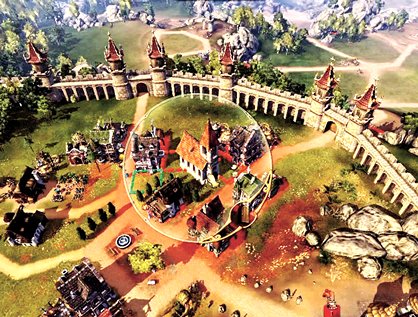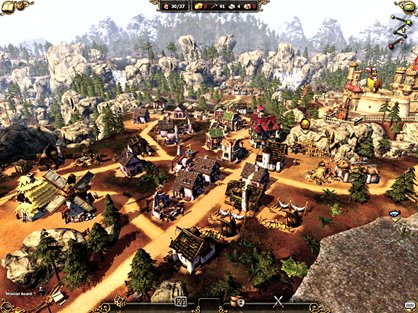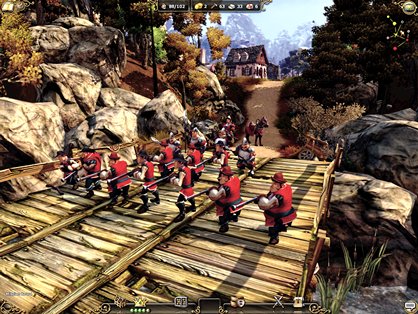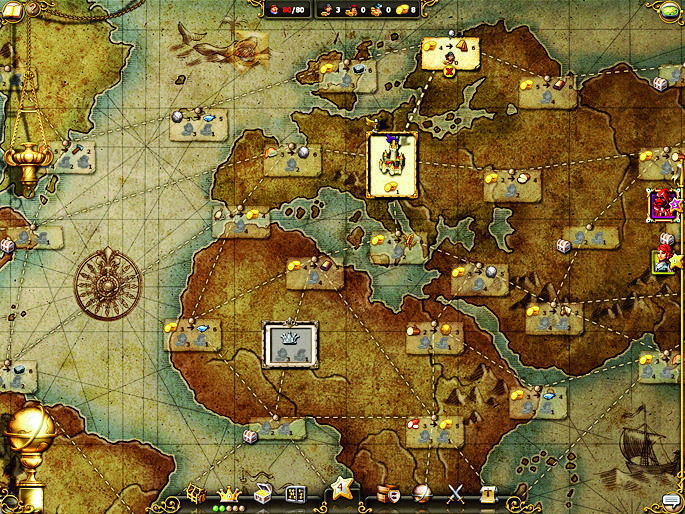GamesRadar+ Verdict
Pros
- +
Extremely deep and complex economy
- +
Gorgeous graphics
- +
Balanced
- +
exciting risk/reward gameplay
Cons
- -
Often feels like a math test
- -
Over-complicated trade system
- -
Horribly punishes small mistakes
Why you can trust GamesRadar+
The Settlers: Loads of Really Long, Complicated Paths to Building Even a Single Damn Thing, more like. The latest update to the real-time strategy/city builder series that makes gentlemen of a certain age turn misty-eyed and start muttering about Amigas is a ferociously complicated affair. It abandons the cheerfully dawdling pace of many of its predecessors in favour of something that can feel like a math exam. In fact, it is important to refer to this cartoonish medieval economy-and-warfare title as The Math: Math to a Math from this point onwards.

If you can achieve a state where at least 50 per cent of your buildings don’t have an angry red exclamation mark over them, denoting that some resource is depleted or otherwise unavailable, you’re doing well. We’d look at the verdant, seemingly endless forestry surrounding our cities, making them genuinely part of a world rather than built atop unearthly floating plateaus, and we’d feel calm and pleased. Then we’d look at our town and be plunged into panic by how much stuff was going wrong, swiftly rejoined by the dread awareness of quite how much work would be required to fix it.
Fundamentally, it’s a game of supply lines. To summarise very broadly, soldiers need weapons need blacksmiths need gold needs mines need workers need food need farmers need houses need space, space, space. Except it’s nowhere near that simple – there’s a cause and effect to almost everything you build. Building clerics (necessary to research new technology and upgrades) requires beer, which requires grain. But, if you want to get anything built, you’ll also need a whole lot of bread to feed your populace, which requires flour – which also requires grain.
In the limited space you have available, do you build grain barns to further booze production, or windmills to mass-produce your own Hovis? Ideally, you’ll have a dedicated farm for both, but good luck finding enough room for them. Fail to learn every building’s requirements and consequences and you’ll end up deep down a domino effect that sees all your production grind to a standstill.

This happened in one of our multiplayer games – both players were totally stymied for a good ten minutes while we demolished and rebuilt and prioritised and traded in a desperate attempt to lay hands on the resources necessary to build tools so we could mine some gold ore and build a mint to create gold coins to buy some soldiers to go grab a new territory to have to the space to build some tools to mine some gold ore and build a mint and so on and so on. If that sentence makes no sense to you, stay your insult against our reckless grammar-butchery and bear in mind that this is what the game is like.
To cheerily decide ‘ooh, I think I’ll build a soldier now’ can be fatal – you have to be thinking in chains at all times. Many resources are finite, so unless you’ve also mastered the over-complicated trade system, you’ll eventually ram that pretty head of yours into the hard ceiling of what you can afford to build.
All of those words above probably sound a lot like moaning. Well, maybe they are, but really they’re setting the scene. This is what you’re signing up for with The Math: Math to a Math. The very, very up upside is that mastering all these systems grants you access to an exceptionally clever game that’s determined to provide substantial strategy to those who crave it. It might seem impossibly convoluted and determined to run you into repeated brick walls to start with, but get past that and it’s truly impressive how balanced this thing is.

The central idea is that you can pursue victory via military might, scientific progress or financial steamrollering. So long as you can provide the economy, combat itself is much more in-keeping with the rest of the game than the more overtly RTS-y fights the last couple of Settlers offered. Via a very fiddly series of menus, which are probably the game’s worst feature, you select your guys than send ’em to whatever territory you want to grab. So long as you have a greater weight of numbers, and have ascertained what type of units and structures the enemy is defended with, then build counter-units accordingly – your army will do the hard work for you.
Indirect combat suits this game perfectly, but it’s often frustrating that it takes so much hard graft and so long to get to the point where you can field a halfway decent army.
More info
| Genre | Strategy |
| Platform | "PC" |
| US censor rating | "Rating Pending" |
| UK censor rating | "" |



